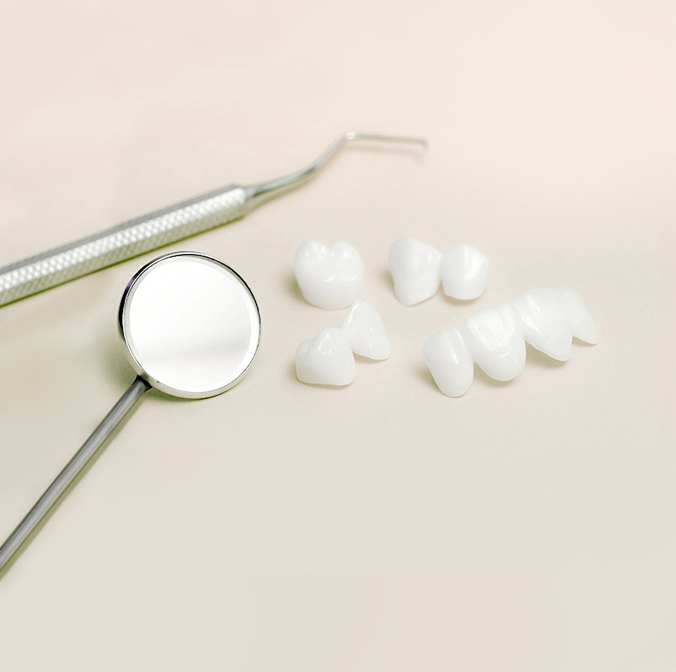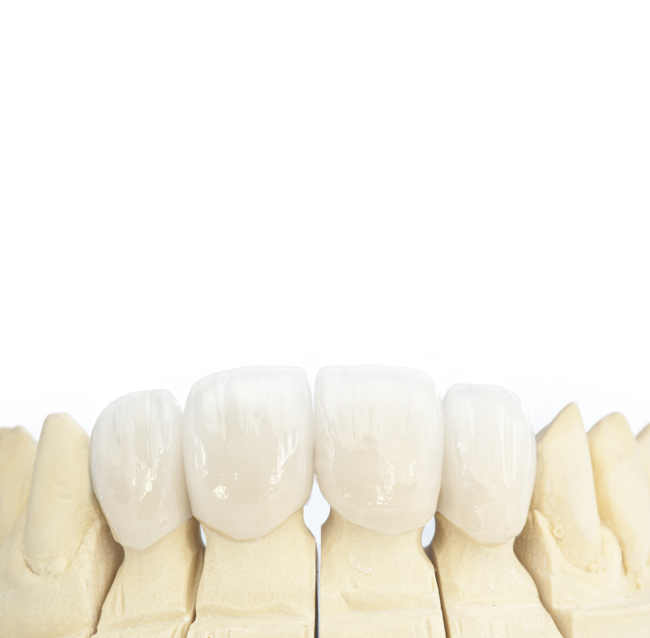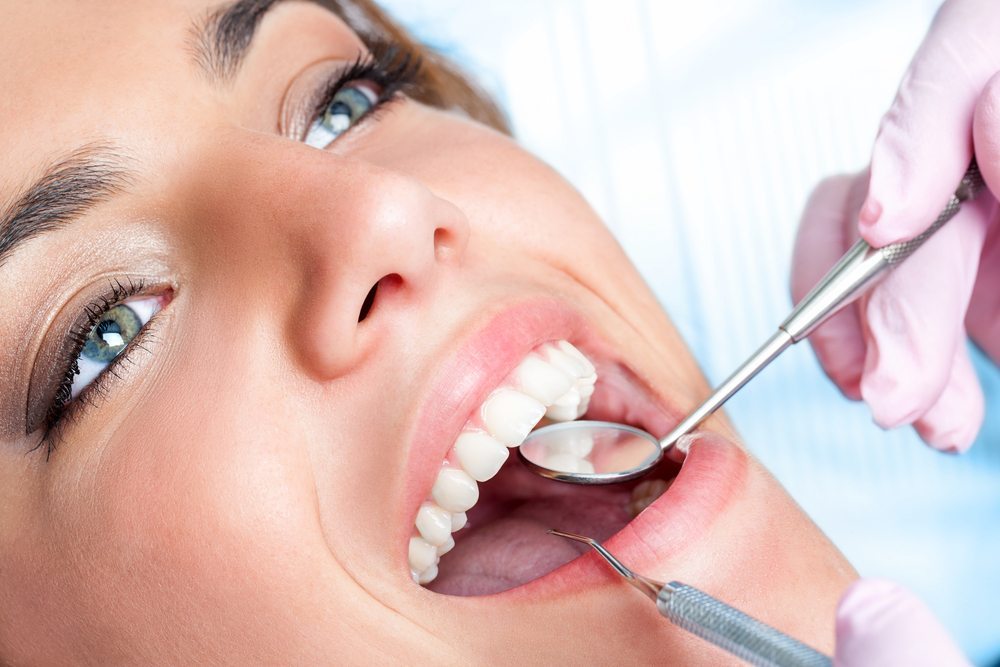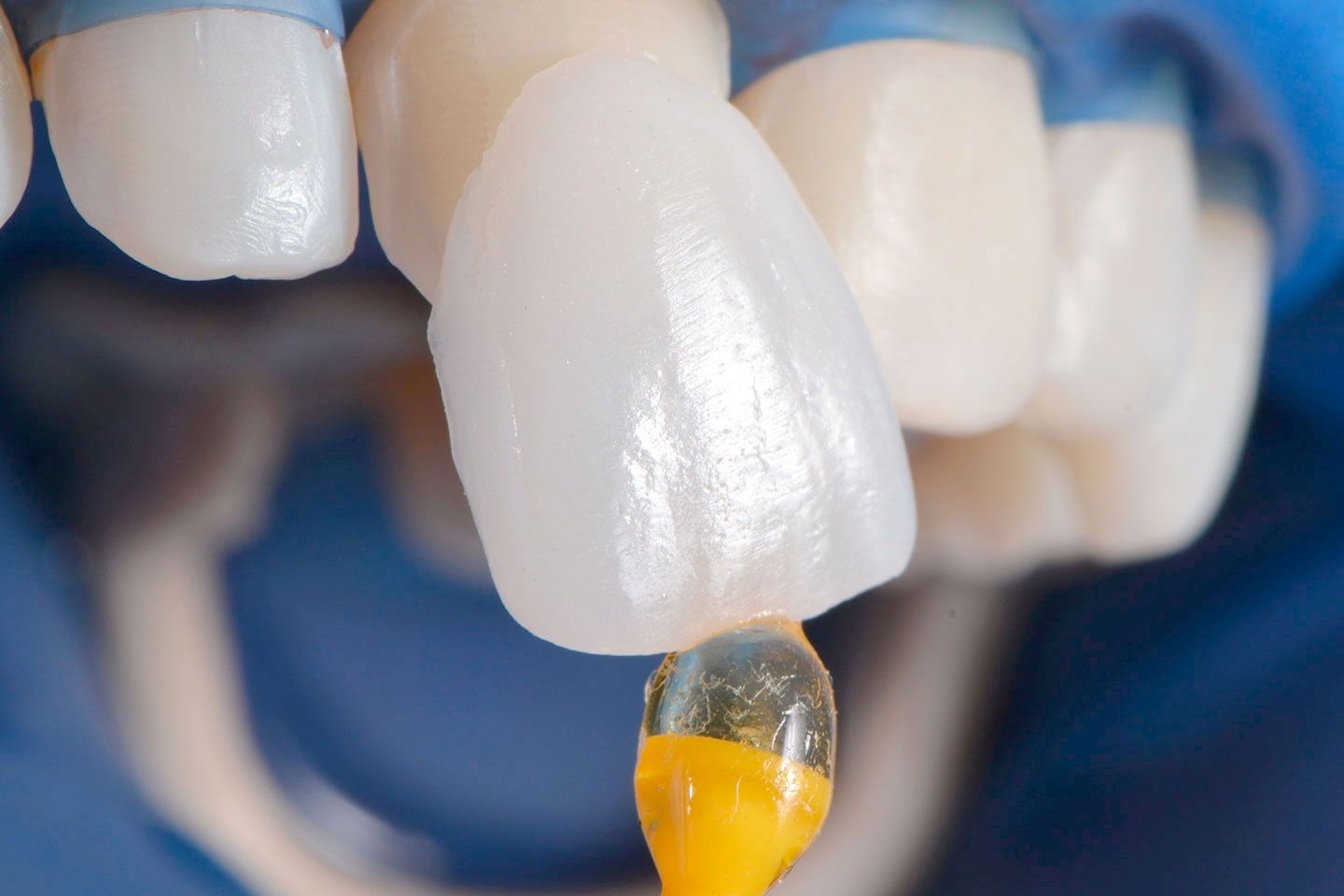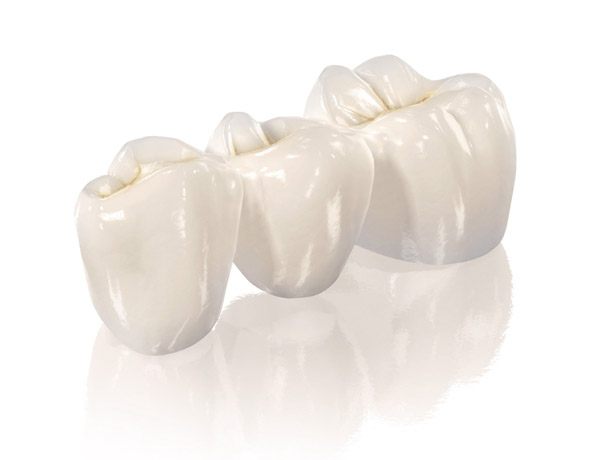Dental Veneers
Veneers are a tiny porcelain shells for the tooth.
Dental veneers are an excellent option for people interested in improving the appearance of their smile. They consist of thin layers of porcelain or composite resin and are custom fit for your teeth.
Once applied, the results are a natural-looking surface that improves the appearance of your teeth, covering stains, disguising chips, and minimizing gaps or alignment issues, giving you the radiant smile you deserve.
Plus, veneers resist staining and damage, ensuring your results will last over the long-term with proper care.
Dental veneers (sometimes called porcelain veneers or dental porcelain laminates) are wafer-thin, custom-made shells of tooth-colored materials designed to cover the front surface of teeth to improve your appearance. These shells are bonded to the front of the teeth changing their color, shape, size, or length.
Dental veneers can be made from porcelain or from resin composite materials. Porcelain veneers resist stains better than resin veneers and better mimic the light reflecting properties of natural teeth. You will need to discuss the best choice of veneer material for you with your dentist.
Veneers are routinely used to fix:
-Teeth that are discolored -- either because of root canal treatment; stains from tetracycline or other drugs, excessive fluoride or other causes; or the presence of large resin fillings that have discolored the tooth
-Teeth that are worn down
-Teeth that are chipped or broken
-Teeth that are misaligned, uneven, or irregularly shaped (for example, have craters or bulges in them)
-Teeth with gaps between them (to close the space between these teeth).
Composite veneers are done in one visit and are sculpted at the time of placement. The composite resin is applied in layers to the tooth and modeled to the correct shape, length and form. Each layer is hardened using a curing-light.
When all composite is placed, veneers need to be polished extremely well before they are bonded to tooth structure.
Normally, a small amount of tooth structure has to be removed to allow for placement of composite resin in the desired shape without added tooth bulk. In most cases, composite veneers are more conservative of tooth structure as less amount has to be removed compared to porcelain veneers.
When are composite veneers most effective ?
Composite veneers are used in situations in which smaller changes have occurred:
-chipping or discoloration of natural teeth
-minor misalignments of teeth
Composite cannot fill in large spaces so many dental professionals will recommend not to use composite veneers when you have big spaces between the teeth, very short teeth you'd like to lengthen, or have broken a large part of the edge of a tooth off.
Ceramic Veneers are thin porcelain shields that cover only the front face of the teeth. They represent a permanent solution to change or improve the image of stained, chipped, broken or unaesthetic teeth. At least two appointments are necessary to carry out the clinical and technical steps for making the veneers.
Like many dental procedures, the dental prints are taken before, during or in some cases even after making the ceramic veneers. The dental prints taken at the start of the procedure are used to create a plaster model of the teeth. The plaster model helps the dental technician to make the final veneers or to make a wax-up. Wax-up is a model that shows the final form of the veneers. The wax-up can be used to achieve provisional facets that the patient will wear until the ceramic ones will be made.
They provide a natural tooth appearance.
Gum tissue tolerates porcelain well.
Porcelain veneers are stain resistant.
The color of a porcelain veneer can be selected such that it makes dark teeth appear whiter.
Veneers offer a conservative approach to changing a tooth's color and shape; veneers generally don't require the extensive shaping prior to the procedure that crowns do, yet offer a stronger, more aesthetic alternative.
Lumineers
Whereas traditional porcelain veneers are approximately 0.5mm in thickness, Lumineers are about the same thickness as a contact lens, so approximately 0.2mm or less. They are digitally designed restorations that can be placed directly over your teeth, providing a natural looking smile. Your teeth will not need to be prepared so there is no need for anesthesia or temporary veneers while your permanent veneers are being made. If at any point in the future you decide you’d like to reverse treatment, then it’s simply a case of removing your Lumineers, exposing your undamaged and fully intact teeth underneath.
Veneers and luminaires are mainly responsible for providing aesthetic appearance. Veneers and lumineers are considered micro-prosthesis and the doctor, by the help of the latter can change the color as well as the shape, size, appearance of the tooth.
Like other constructions the latter also have their indications and contradictions. They make it possible for the doctor to:
• Close the tremmaners and diastemas (i.e. the distance between the teeth)
• To revet the tooth in case there are only cracks on it
• To change the color of the tooth or to remove the pigments if they are not of caries origin
• To change the visual shape of the teeth
They make it possible for the doctor to:
• Close the tremmaners and diastemas (i.e. the distance between the teeth)
• To revet the tooth in case there are only cracks on it
• To change the color of the tooth or to remove the pigments if they are not of caries origin
• To change the visual shape of the teeth
Lumineers are made from the same material as all other veneers. Dental veneers are made from a form of porcelain that is mixed with other materials to create a tooth-like coating that improves the appearance of the mouth, sometimes dramatically so. Lumineers are made from Cerinate porcelain and are usually attached with Ultra-Bond Restorative Resin Cement and Tenure adhesive glue. Cerinate porcelain is created with feldspathic porcelain mixed with leucite crystals. These materials provide a bond with the teeth that can last for twenty years or more.Lumineers can be installed in one of two ways. The first way is the traditional installation method. This is where a dentist will file down the existing teeth leaving gaps between the teeth so that the appearance of the Lumineers will look like the patient’s regular teeth. The second way to install Lumineers is directly over the existing teeth. This coating will leave a bump between the tops of the original teeth and the new veneers. Naturally, the best possible fit, look, and comfort at paramount when deciding on the best installation method for you.
CERAMIC TAB
In some cases, the ceramic insert? It’s simple. The need for a ceramic seal occurs when the usual, standard seal is, simply put, there is nothing to put, but without a crown you can still do.
The crown is placed in the case of complete absence of the tooth, and the ceramic seal can be installed on a dilapidated tooth that needs to be urgently “saved”.
Ceramic tab on the tooth – just the perfect option in terms of aesthetics. Ceramics is superior to all other materials for its aesthetic qualities. Ceramics almost “repeats” the natural enamel of the tooth, which looks as organic and natural as possible.
When your tooth needs a restoration due to a cavity or fracture, the dentist is always considering the different types of materials which may be used to restore your tooth and trying to select one that is right for your specific situation. There are a few factors to consider and things for you to keep in mind to understand and help in the process to select an appropriate material to achieve a long term successful restoration. Two type of materials which are often compared to each other are composite vs ceramic due to them both being “white” in colour and mimic natural tooth colour.
Composite resins are relatively straightforward to place, they take a relatively short period of time to place and can be completed in a single visit however making sure the tooth is clean and dry is essential for “bonding” the material to the tooth which does rely on the dentist’s skill. composite resins are less brittle than ceramics but have greater wear at the edges so may not last as long as a bonded ceramic restoration. composite resins are used when restoring teeth with minimal biting forces and can also be used as intermediate restorations when planning full mouth restorative cases.
Ceramics can be used on their own to create a restoration for a tooth either as an inlay, onlay, full crown or veneer or as a hybrid type crown (metal inner layer with porcelain/ceramic exterior). Ceramics have high aesthetics and can be bonded to the tooth to restore looks and function.
One difference between ceramic and composite materials is that ceramics have better wear resistance, mechanical properties and have less stress on the surrounding tooth at the restoration-tooth margin. Ceramics are ideal for inlays, cusp coverage restoration such as crowns and onlays, and as highly aesthetic veneers. Ceramics are often used in smile makeover cases!
Stump Tab
Stump tabs are overall alloyed constructions which being fastening the tooth from inside, at the same time recovering the dental crown of the latter. The dental crown is recovered so as to make it possible to fasten an artificial dental crown on it. That is to say, the hewed part of the stump tab has the appearance of a tooth.
Stump tabs may be both overall and on shtift, in case of polyroot teeth can be metal- alloyed and not metal-alloyed, as well as of zircon oxide. These constructions are used when the tooth is totally spoilt, even up to the gum boarder line.
Before making a stump tab the tooth should undergo an ideal recovery, the root canals should be filled up to the top, the filling quality is checked through an x-ray examination. The next step will be to process the tooth canal by the 1/2, 1/3, of its size and to give it respective width and cone shape. That is to say, a room is being made for the future in-root insert. After the final processing a two-layer silicone size is measured which provides the basis for the dentist-technician to make the stump tab.
The ready insert is fixed by special glue, and a day later, it is already possible to take the final measure to make the permanent artificial corona.
Dentures
A denture is a removable replacement for missing teeth and surrounding tissues. Two types of dentures are available -- complete and partial dentures. Complete dentures are used when all the teeth are missing, while partial dentures are used when some natural teeth remain.
Complete Dentures
Complete dentures can be either "conventional" or "immediate." Made after the teeth have been removed and the gum tissue has begun to heal, a conventional denture is ready for placement in the mouth about eight to 12 weeks after the teeth have been removed.
Unlike conventional dentures, immediate dentures are made in advance and can be positioned as soon as the teeth are removed. As a result, the wearer does not have to be without teeth during the healing period. However, bones and gums shrink over time, especially during the healing period following tooth removal. Therefore a disadvantage of immediate dentures compared with conventional dentures is that they require more adjustments to fit properly during the healing process and generally should only be considered a temporary solution until conventional dentures can be made.
First of all, prostheses are divided into removable and non-removable. Removable prostheses can be used in case of both complete and partial absence of teeth. Removable dental prostheses can be easily installed in the oral cavity and removed by the patient. After removal, hygienic processing of prostheses is easy. This is the plus and minus of this prosthesis. The teeth become clean, the remnants of food are extracted from them, and of course, this is good. At first it seems burdensome, but later this procedure becomes a habit. Non-removable dental prostheses are firmly fixed, and their cleaning does not differ from ordinary toothbrushing. Today this option is the most optimal.
Partially removable prostheses. Such prostheses are attached to the gum and to real teeth. Acrylic prostheses, the most common, are very light. To install them, you do not need to grind your teeth, as they are attached with the using of special hooks. The material is acrylic plastic, which has no contraindications. These prostheses have a very affordable price. Acrylic-free prostheses (acryphry) are created from acrylic resins, which do not contain substances that cause gum irritation. They are very strong and fit snugly to the gums. If the patient has his own teeth, then the prosthesis is attached to them with the using of special hooks. If there are no teeth, then the dental prothesis joins with a suction cup. Traditional nylon dentures have proven effectiveness only in the case of restoration of small segments of the dentition. In the absence of teeth, they are not suitable, as they are too elastic and do not properly distribute the masticatory load, further atrophying the bone and alveolar crest that they hold on to. The main disadvantage is that such prostheses are expensive. Besides, they cannot be adjusted. Clasp dentures, also known as bugel dentures, are a cast metal frame covered with an acrylic layer. Artificial teeth are installed on the frame. The metal structure allows you to evenly distribute the load when chewing. The clasp prosthesis takes up less space in the oral cavity. Such a prosthesis can be attached with hooks, micro-locks, telescopic crowns.
A removable denture is the best solution for those who have completely lost their teeth. It consists of a base part and the teeth made of materials selected by the patient. The base can be made of plastic, metal or nylon. The teeth are made of acrylic, nylon or polyurethane. The prosthesis is made in accordance with the physiological characteristics of the patient’s oral cavity, which implies reliable fixation of the structure. Over time, when the primary tight fixation is slightly weakened, suction cups or a special cream corrector may be required.
Dental clinic Aregak offer a wide range of dental prosthetics services that will allow everyone to regain a beautiful smile.
Partial Removable dentures
A removable partial denture (RPD) is a denture for a partially edentulous patient who desires to have replacement teeth for functional or aesthetic reasons and who cannot have a bridge (a fixed partial denture) for any reason, such as a lack of required teeth to serve as support for a bridge (i.e. distal abutments) or financial limitations. A removable partial denture or bridge usually consists of replacement teeth attached to a pink or gum-colored plastic base, which is sometimes connected by metal framework that holds the denture in place in the mouth. Partial dentures are used when one or more natural teeth remain in the upper or lower jaw. A fixed bridge replaces one or more teeth by placing crowns on the teeth on either side of the space and attaching artificial teeth to them. This "bridge" is then cemented into place. Not only does a partial denture fill in the spaces created by missing teeth, it prevents other teeth from changing position. A precision partial denture is removable and has internal attachments rather than clasps that attach to the adjacent crowns. This is a more natural-looking appliance.
Partly movable prosthesis (biugel prosthesis) are a kind of movable prosthesis, the basis of which (the part which is the background for artificial teeth and other auxiliary elements providing fixation, i. clammers, foot and so on) is predominantly metal, which makes it possible for the whole size of the prosthesis to be made small.
The basis of the biugel prosthesis of the lower jaw is a tiny metal arrow, which unites the saddle-shaped parts and provides the equal distribution of chewing pressure.
The indication for the biugel prosthesis is the partial adentia. The teeth survived which should be used as basis providing fixation must be in a good state, otherwise, the application of biugel is contradicted, because in a very short period of time not full basis might become subject to removing.
Biugels in mouth cavity can be fixed to clammers (metal foot) by clutters and telescopic dental crown.
Clammer variant is used when the teeth survived have enough length (when the dental crown is not short), and have a well expressed anatomic appearance (well expressed equator), as well as in the case if there is a need to shell the teeth survived, which move slightly (on this case polytied clammers, which shell the moving tooth.)This kind of biugels are called shelling clammers.
The privileges are that the basing tooth are usually not hewed and are never exposed to a large overloading.
The disadvantages are that in frontal area metal clammers are seen which could provoke aesthetic problems.
The telescopic system is used when the anatomical appearance of the tooth is not complete, the height is short, and in the cases when there is a risk, that by time (2-3 years), it will be subjected to removing. This system consists of 2 parts- of metal “cap” (the inner part) which is always fixed to the teeth hewed and of the artificial dental crown, which is fixed to the prosthesis basis (outer part). The metal “cap” is a roll-shaped construction which implements the role of a fixator for basic construction (the buigel prosthesis in this case), and can also be called frontal crown. The second crown (the artificial crown which is fixed to the basis of the basic construction) is made fully adjusted to the second crown, so that it is possible to disturb only in the case of vertical movement of the prosthesis, while forcing some pressure.
The advantage of this system is that a wonderful aesthetic result as well as firm prosthesis fixation can be achieved.
The disadvantage is the necessity to hew the basic teeth.
The lock systems (atasments) are used when the basic teeth have enough height and are healthy (the paradont is not infected, there is no move. When the lock system is applied the basic teeth are covered by artificial dental crowns, which provide the background for lock constituents. The reverse parts of those constituents are on the prosthesis, and in result of their combination a tight constipation occurs.
The advantages of this system are considered the high aesthetics, as in the combination of the two constituents of the lock they are not seen, and the fixation firmness is also high.
The disadvantage is the necessity of hewing the basic teeth, as well as the fact, that as the prosthesis is being used, some constituents of the lock are worn out which can lead to the weakening of the fixation. In spite of all this the used constituent (the matrix i.e. the plastic tin in the case of atasment lock) is subjected to restoration in the conditions of technical laboratory, after which the lock acquires its primary firmness. There are also such kinds of lock systems, which do not have wearing out elements in their constituents (MK1).
Independent of the circumstances which variant is chosen for you, one should bear in mind of attending the orthopedist to check the functional wholeness of the prosthesis, and to make the respective corrections.
Dental bridges are another dental option for people with missing teeth. A bridge contains one or more false teeth that are fixed permanently to the natural teeth on both sides of the area that is missing teeth. To place a dental bridge, the dentist first prepares the healthy teeth on each side of the area missing teeth by filing the two healthy teeth down. Next, the dentist takes an impression of your teeth. With this impression, the artificial teeth are created, as well as the crowns that will fit over the healthy teeth. To place the bridge, the crowns are cemented onto the healthy teeth, reports the CDA. The procedure takes two separate visits.
Diagnostics
The right diagnosis of mouth cavity is the essential part of dental treatment. Different methods are applied for the diagnosis. The in-time diagnosis contributes to the selection of a more effective and influential methods, and for this reason the patient is able to get rid of the problems bothering him more rapidly and to return to the common pace and routine of his life. Just in this stage does the psychological communication between the doctor and patient established.
Dental Clinique Aregak has various services of diagnosis. An elaborate diagnosis is carried out aimed at leading to the right medical conclusion and further effective treatment. This includes the minute examination performed by the dentist, x-ray examination and mouth cavity examination.
Dental Crowns
A dental crown is a tooth-shaped "cap" that is placed over a tooth - to cover the tooth to restore its shape and size, strength, and improve its appearance.
The crowns, when cemented into place, fully encase the entire visible portion of a tooth that lies at and above the gum line.
A crown, sometimes known as dental cap, is a type of dental restoration which completely caps or encircles a tooth or dental implant. Crowns are often needed when a large cavity threatens the ongoing health of a tooth. They are typically bonded to the tooth using a dental cement. Crowns can be made from many materials, which are usually fabricated using indirect methods. Crowns are often used to improve the strength or appearance of teeth. While inarguably beneficial to dental health,[citation needed] the procedure and materials can be relatively expensive.
The most common method of crowning a tooth involves using a dental impression of a prepared tooth by a dentist to fabricate the crown outside of the mouth. The crown can then be inserted at a subsequent dental appointment. Using this indirect method of tooth restoration allows use of strong restorative materials requiring time-consuming fabrication methods requiring intense heat, such as casting metal or firing porcelain which would not be possible to complete inside the mouth. Because of the expansion properties, the relatively similar material costs, and the cosmetic benefit, many patients choose to have their crown fabricated with gold.
As new technology and materials science has evolved, computers are increasingly becoming a part of crown fabrication, such as in CAD/CAM dentistry.
During the first dental visit, an X-ray is usually taken of the tooth and jawbone to investigate for signs of decay and other factors that could increase the risk of infection or injury to the pulp of the tooth. For some patients, root canal treatment may be required prior to the placement of a crown on a tooth.The tooth will need to be shaped to allow room for the crown to be placed; the extent of reshaping will depend on the type of crown being used. Metal-based crowns tend to be thinner and, therefore, require the removal of less structure of the tooth than porcelain crowns. The top and sides of the tooth are filed down to shape the tooth as needed for the crown. Any tooth decay should also be treated during this step.Impressions are usually made using a paste or putty that holds the shape of the tooth. It is spread over the area to be copied and then pulled away, keeping the shape of the relevant teeth on its surface.
At this point, it is important to record details about the tooth that will affect the production of the crown, such as the natural fit and color. Ideally, the color of the crown should match that of the tooth and surrounding teeth so that it is not noticed when it is placed inside the mouth.
Finally, a temporary crown is usually placed over the tooth to protect it until the crown has been constructed and is ready to be fixed in place. This will be removed at the next dental visit to make room for the permanent crown.
In the meantime, the impressions of the teeth are sent to a dental technician or laboratory to form the crown in the correct shape. This process typically takes up to three weeks, which is why more than one dental visit is needed to place a permanent crown correctly.
Once the dental technician or laboratory has created the crown, it is time for the crown to be placed over the tooth. If a temporary crown has been placed, this should first be removed.
Dental crowns are fixed prosthetic devices cemented directly onto existing teeth or implants. Crowns can also be used in dental bridges to fill a gap if you’re missing one or more teeth. Due to their many uses, it’s important to understand the different types of dental crowns available, and the advantages of each.
The most common restorative material for dental crowns and bridges is a mixture of porcelain and metal. When porcelain and metal are heated together, the porcelain chemically fuses to the oxides on the metal, which creates a durable bond.
Porcelain-fused-to-metal crowns are stronger than regular porcelain because they are supported by a metal structure. They also blend in well with the shape, look, and function of your natural teeth.
Metal crowns come in a few different forms and colors. They provide a strong bond, are fracture-resistant, and do not wear away teeth. These crowns typically consist of gold, copper, and other metals. Some metal crowns are made of non-noble metals, which are very strong and corrosion-resistant.
Crowns require the removal of tooth structure before placement. Metal-based crowns require the least amount of removal, making them a more conservative option.
Ceramic crowns are made of porcelain. In dentistry, porcelain is used to create tooth-colored dental materials, such as cosmetic crowns, that mimic the look, shape, and function of natural teeth.
ceramic crown on isolated background
Cosmetic crowns restore anterior (front) teeth and blend in with your natural tooth color. They are strong, durable, and do not chip or break easily. the most common alternative to all-ceramic crowns is “zirconia,” which is actually a metal.
All-resin restorations are less expensive than metal, ceramic, gold, and porcelain crowns. However, dentists do not normally recommend resin crowns because they are more vulnerable to fractures, wear and tear, and do not last as long.
Resin is a thinner and more fragile material than other dental restorations, such as metal and porcelain. Resin restorations are only used on decayed baby teeth, rather than permanent teeth.




